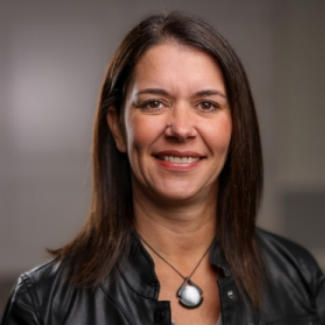Now that the two-year COVID-19 shutdown and daily case statistics are receding from the front page, the industry is emerging into a changed marketplace and thoughts are again turning to shaping the future as opposed to just hanging on. The shape of that future of course depends, as it always has, on innovation.
Departing from established comfort zones – whether traditional or recently acquired – requires executives to consider new ways of forming the future and taking more risk. It’s a challenge, but also an opportunity.
Ray Garries, president of Global Fenestration Advisors, and founding chair of the FGIA Innovation Task Group formed in 2017, recently moderated a roundtable discussion about the latest innovations in the window and door industry and the process followed to develop them.
Define an Innovation Process
Without a fully developed innovation system, many organizations are unlikely to innovate successfully, regardless of how promising the ideas are. Panelist Tim McGlinchy (GED Integrated Solutions), shared the company’s new product development process of evaluate, prioritize, develop, launch and measure. Key elements include:
- Monitor competitors and the market to uncover and address customers’ wishes and problems. Remember, a problem is an opportunity.
- The innovation project team should be cross-functional. Consider the up- and downstream implications in the current environment – supply chain issues, labor shortages, marketing channels, distribution issues and installation. Panelists agreed that innovation does not have to just be for engineers or technical people. Everybody has great ideas.
- Provide an open/free atmosphere of inquiry with few boundaries; avoid micromanagement. Create some boundary conditions to maintain focus, but don’t pre-judge emergent ideas.
- Provide resources of time and funding within reason; don’t be afraid to risk. Innovation is inherently risky, but the key is to manage risk rather than eliminating it. “Talk doesn’t do enough,” Garries observed. “You have to act. Action changes the future.”
- Allow failure. Discovery is iterative. The best approach to getting good ideas is to collect lots of ideas and throw away bad ones. Garries recommends that, in addition to commitment and having the right focus, a certain tolerance for failure must exist. “You have to fail a lot to get the right thing,” he said.
- Recognize and reward success.
In essence, prioritize how to get products out the door and keep the development process disciplined. One way to do this is to characterize the options by impact – degree of change involved and level of technological risk. For example, product redesign would have a relatively low degree of change and risk while, at the other end of the spectrum, a new manufacturing system would have a high change and risk score.
Critical actions include justification like market need and financial return on investment, customer involvement to validate the value proposition and continual communication.
Examples of Innovation
The three panelists each shared some of their company’s wide variety of innovative ideas.
McGlinchy noted GED’s new series of glass processing machinery for cutting and edge deletion, which McGlinchy said can increase throughput, reduce glass waste and improve scoring and deletion quality. Also reported by GED was a more accurate product tracking system that solved the challenge of misplaced windows, saving time and money.
Chad Swier of AmesburyTruth pointed to the new Pinnacle Balance that revolutionizes how a balance locks when the sash is tilted or removed and can also aid in increased window load ratings. Development took about two and a half years, Swier said.
Miles Barr from Ubiquitous Energy reported ongoing work on transparent solar windows that feature completely transparent solar panels with a low-E coating that can generate solar electricity. The energy can be fed into a grid to power various devices, basically turning buildings into vertical solar farms.
Related reading: A conversation with Ubiquitous Energy about the opportunity for renewable energy and how solar windows can enable smarter homes
Whether it is simple or ground-breaking, Garries put the importance of carefully targeted innovation succinctly: “Innovation is turning ideas into invoices.” The key is to have an effective system to channel creativity from all sources.


